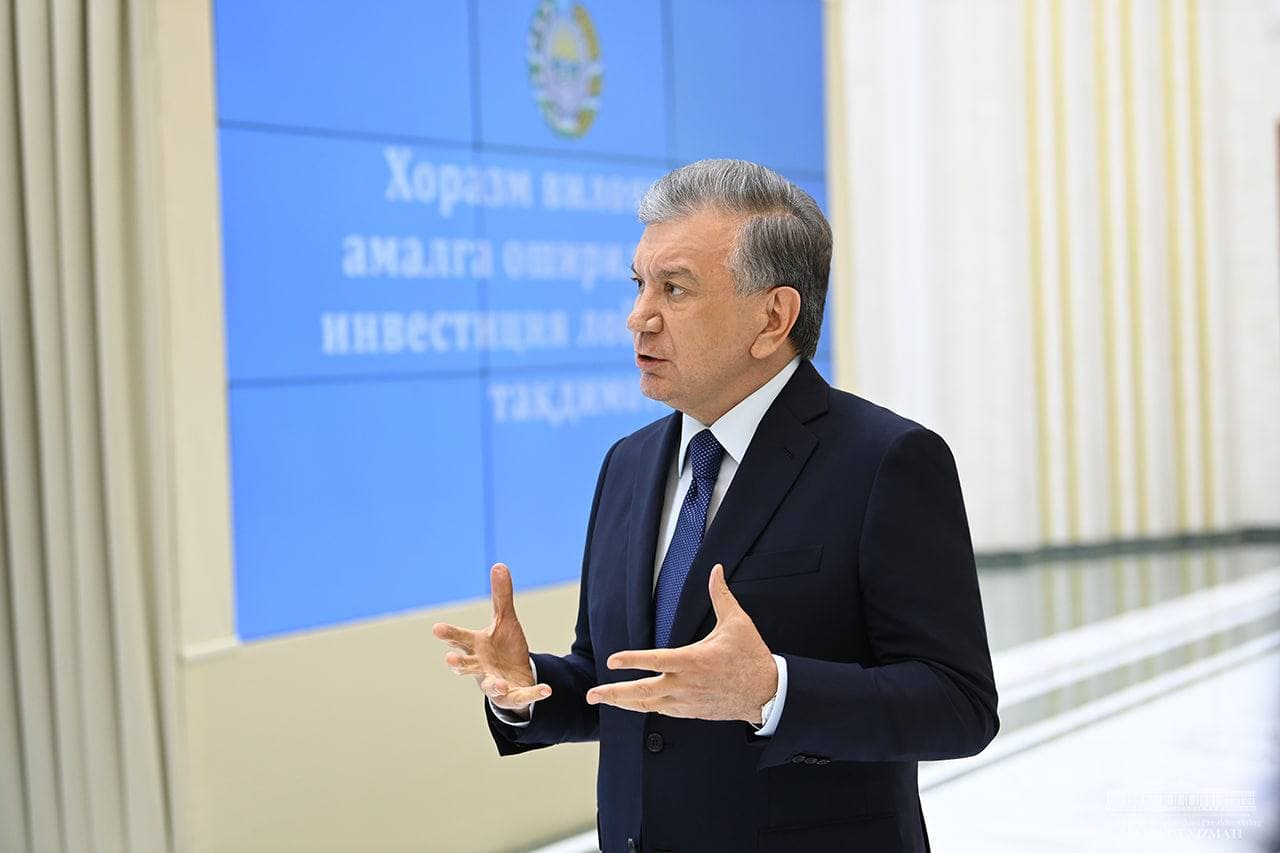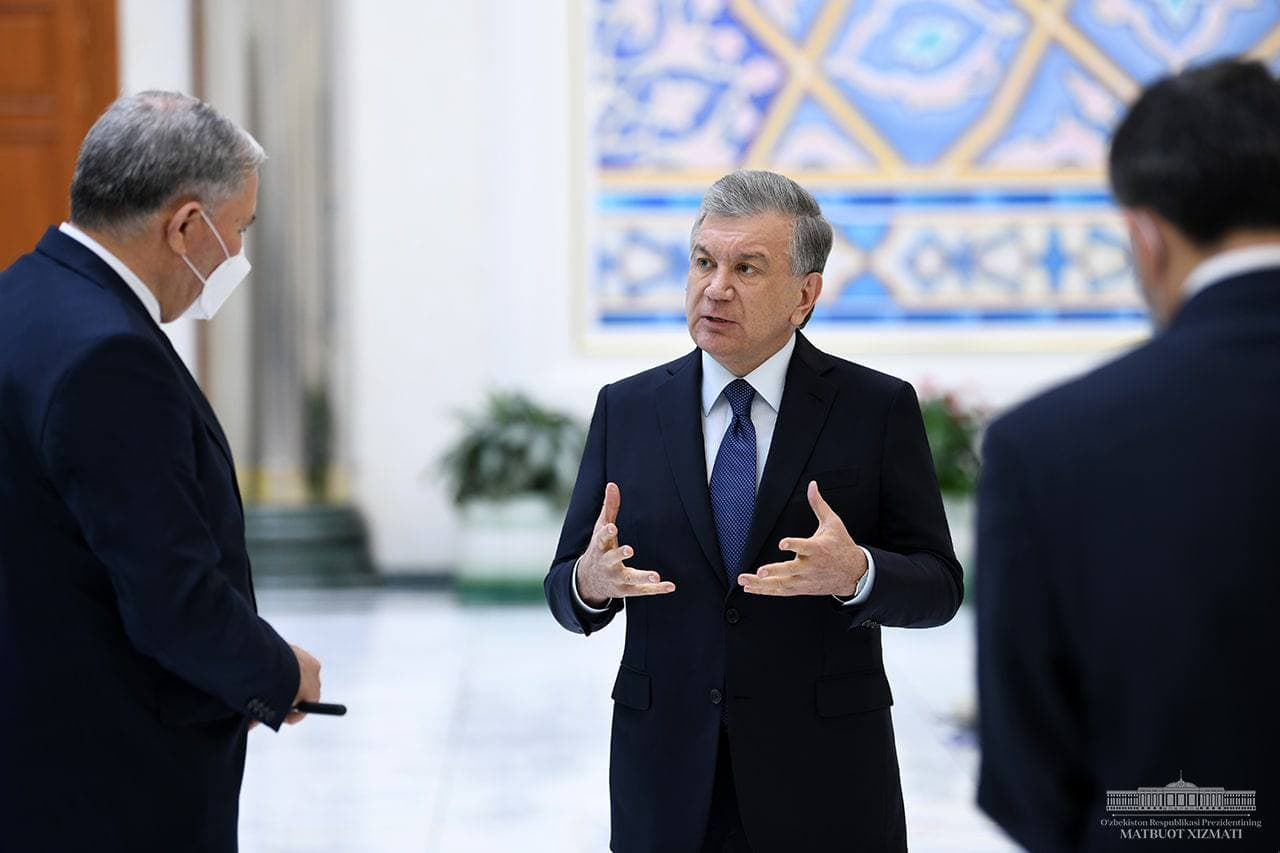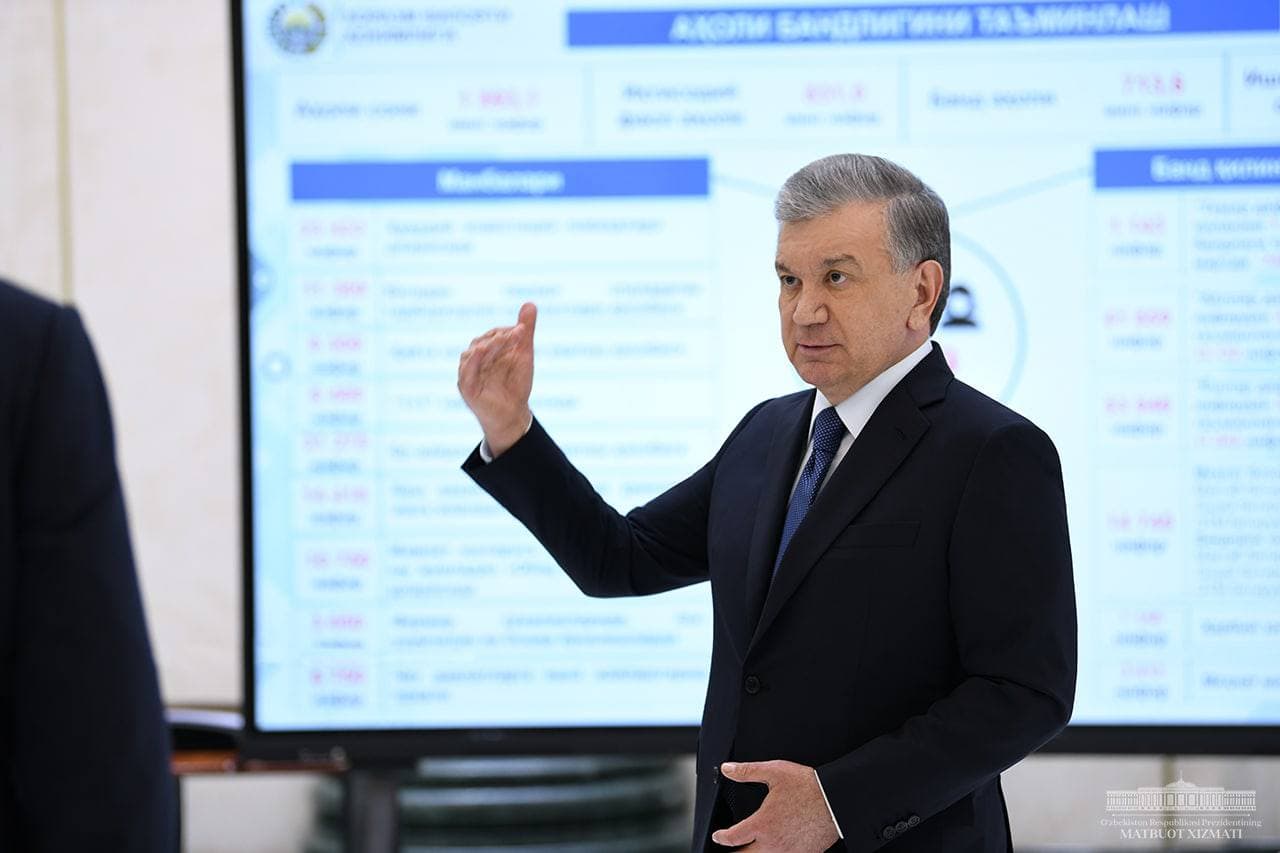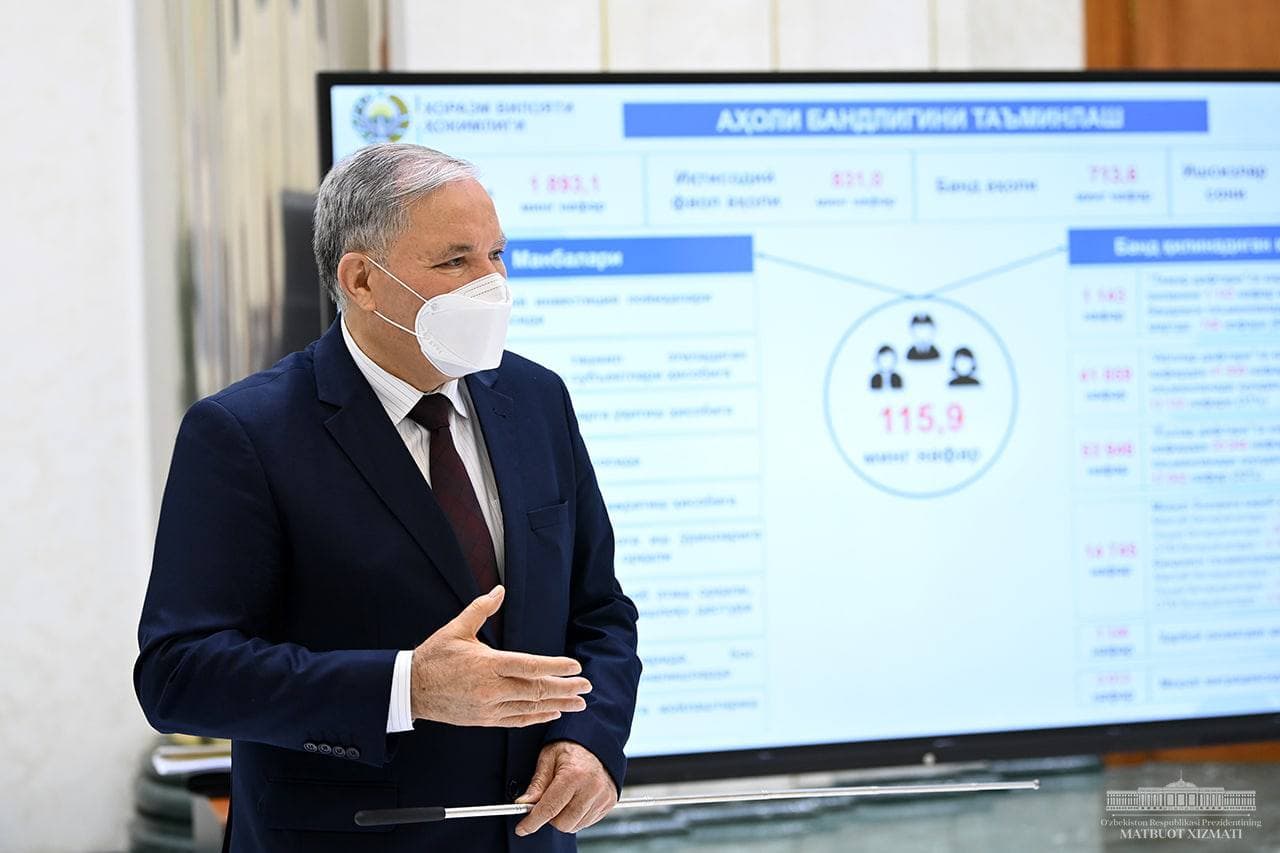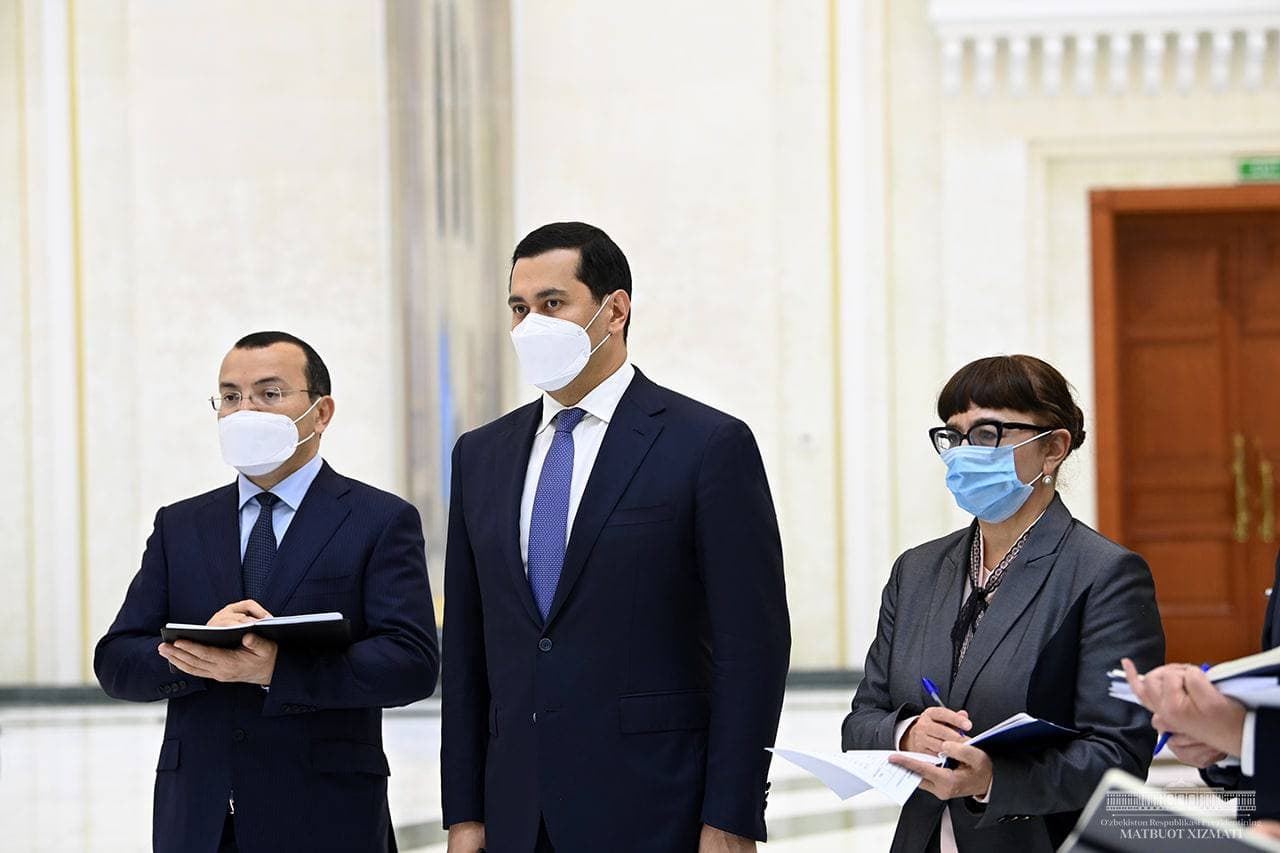
23.03.2021
On March 23, President Shavkat Mirziyoyev got acquainted with the presentation of the investment projects to be implemented in the Khorezm Region.
At the end of last year, on December 12-13, the Head of State visited the Khorezm Region and gave instructions to develop the economy and infrastructure of the region, increase employment and improve the living conditions of the population. Today’s presentation primarily provides information on the work accomplished in this direction.
It was noted that in January-March this year, the implementation of 188 projects was completed, 1 726 jobs were created. About 4 thousand hectares of land were brought into cultivation. The Khorezm branch of the Republican Specialized Scientific and Practical Medical Center for Nephrology and Kidney Transplantation was established. The construction of a new railway bridge across the Amudarya has begun. And there are many such examples.
For the consistent continuation of the development of the region this year, 812 investment projects have been set up for a total of $1 billion 320 million, including 770 local and 42 sectoral projects.
In the context of sectors, 273 projects are scheduled to be implemented in industry, 277 – in the services sector, 262 – in agriculture. It is expected that these projects will create more than 23 thousand jobs and allow the export of goods and services in the amount of $65 million.
The textile, automotive, electrical and food industries, tourism, services and greenhouse facilities are identified as the main «points of growth» of the Khorezm Region.
Thus, the cotton-textile clusters have proposed 49 projects. As a result, the level of processing the cotton grown in the region will more than double. In particular, the capacity of yarn manufacture will increase from 47 thousand to 104 thousand tons, fabric production from 9 thousand to 49 thousand tons, ready-made clothing – from 47 million to 152 million units. Such enterprises will be launched this year in Kushkupir, Shavat, Yangiarik and Bagat Districts.
In the automotive industry, 6 projects will be implemented to produce 100 types of vehicle body parts and spare parts. These products will replace imports amounting to $20 million. As a result, the localization rate at the Pitnak plant will rise from 36% to 45%.
There are 85 projects planned in the construction materials industry. Therefore, the production of gas blocks, ceramic tiles, drywall in the city of Urgench and the wallpaper in the free economic zone «Khazorasp» will be established.
In the very economic zone, it is planned to establish the production of electric motors, and in the city of Khiva – the production of carpets and polypropylene.
In agriculture, the work has begun on the widespread introduction of laser leveling and drip irrigation. The goal was set to bring the yield of cotton to 35 centners per hectare through these measures, and to 66 centners of wheat per hectare.
Khorezm rice is highly popular and in demand on the market. However, due to limited land and water resources in the region, the current harvesting of rice is insufficient. In this regard, the measures are being taken to increase the yield of available rice fields by selecting the best varieties and using foreign technology. For this, the varieties appropriate to the soil and climate conditions of Khorezm will be imported from China. With the same planting area, the yield increase will be 50 thousand tons, which means 684 billion Uzbek soums of additional income. It will also save 113 million cubic meters of water per year.
In order to ensure food security and price stability, this year it is envisaged to grow 151 thousand tons of fruits and vegetables more than last year. In addition, 20 projects will be implemented to increase the livestock, 24 projects in the poultry farming and 8 in the industrial development of fisheries.
During the presentation, the projects in tourism, energy, leather production, jewellery and construction were also considered.
The President approved the plans presented and at the same time set the task to develop additional projects. The instructions were given to find the «points of growth» in makhallas (the local neighborhood community areas), increase the amount of jobs, employ the unemployed, especially the young people and women, and support the self-employed.

